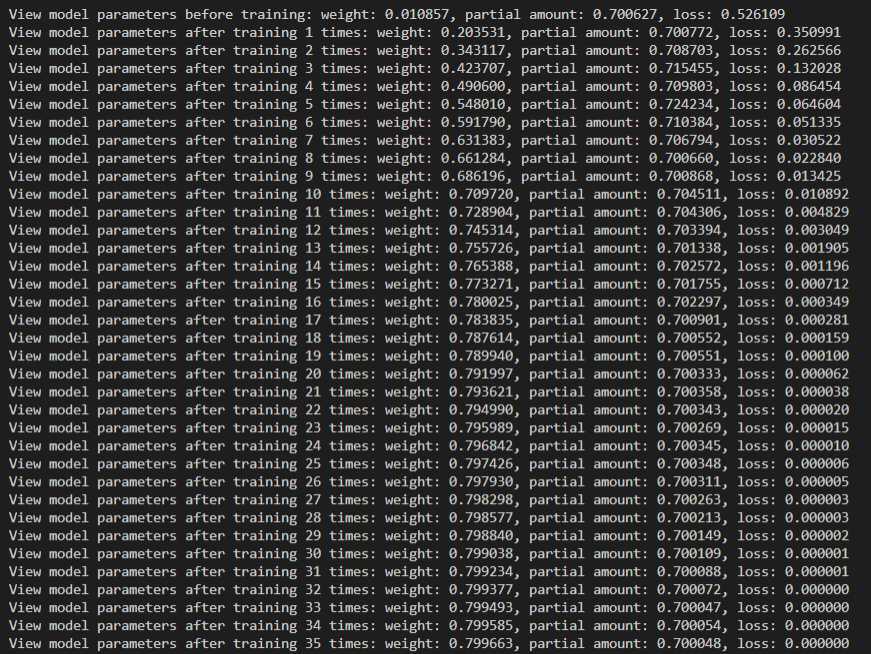X = tf.random_normal(shape=[100,1])
y_true = tf.matmul(X,[[0.8]])+0.7
weight = tf.Variable(initial_value=tf.random_normal(shape=[1,1]))
bias = tf.Variable(initial_value=tf.random_normal(shape=[1,1]))
y_predict = tf.matmul(X,weight)+bias
error = tf.reduce_mean(tf.square(y_predict - y_true))
tf.train.GradientDescentOptimizer(learning_rate=0.1).minimize(error)
Where learning_rate is the learning rate, which is generally a relatively small value between 0-1. Because the loss is to be minimized, the minimize() method of the gradient descent optimizer is called.
import os
os.environ[‘TF_CPP_MIN_LOG_LEVEL‘] = ‘2‘
import tensorflow as tf
def linear_regression():
# 1.Prepare data
X = tf.random_normal(shape=[100,1])
y_true = tf.matmul(X,[[0.8]]) + 0.7
# Construct weights and bias, use variables to create
weight = tf.Variable(initial_value=tf.random_normal(shape=[1,1]))
bias = tf.Variable(initial_value=tf.random_normal(shape=[1,1]))
y_predict = tf.matmul(X,weight) + bias
# 2.Construct loss function
error = tf.reduce_mean(tf.square(y_predict-y_true))
# 3.Optimization loss
optimizer = tf.train.GradientDescentOptimizer(learning_rate=0.1).minimize(error)
# Initialize variables
init = tf.global_variables_initializer()
# Start conversation
with tf.Session() as sess:
# Run initialization variables
sess.run(init)
print(‘View model parameters before training: weight: %f, partial amount: %f, loss: %f‘%(weight.eval(),bias.eval(),error.eval()))
# Start training
for i in range(100):
sess.run(optimizer)
print(‘View model parameters after training %d times: weight: %f, partial amount: %f, loss: %f‘%((i+1), weight.eval(), bias.eval(), error.eval()))
if __name__ == ‘__main__‘:
linear_regression()

原文:https://www.cnblogs.com/monsterhy123/p/13089987.html